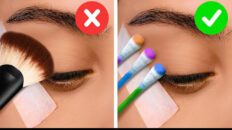What is SPF?
SPF, or Sun Protection Factor, tells us how well a sunscreen shields the skin from UVB rays. UVB rays cause sunburn, harm the skin, and might lead to skin cancer.
What is SPF and can we use it instead of “sunscreen”?
Dr. Elizabeth K. Hale: SPF stands for “Sun Protection Factor,” showing how well a sunscreen blocks UVB rays. It tells you roughly
how long you can stay in the sun without getting sunburned. But remember, SPF only shields against UVB rays, not UVA rays.
How do we know how long an SPF number works, or which number to pick?
The SPF numbers tell time. For example, SPF 30 lets you stay in the sun 30 times longer without burning than without protection. For everyday sun safety, use a broad spectrum SPF 30 or higher sunscreen on your face and body. Try Coppertone CLEARLYSheer For Sunny Days Faces and CLEARLYSheer For Sunny Days SPF 30 Body Lotion. They’re light and won’t clog pores.
Apply generously and reapply every two hours, especially after swimming, sweating, or drying off with a towel.
What’s the difference between waterproof and water resistant?
Since 2011, the FDA says no sunscreen is “waterproof.” If it’s labeled “water-resistant,” it keeps the same SPF level after 40 or 80 minutes of water exposure.
Do certain SPF numbers suit different activities (like sitting vs. playing sports)?
The SPF works the same, but how long it lasts varies based on SPF and activity level. Someone sweating in volleyball with SPF 50 gets the same protection as someone by the pool with SPF 50. But the volleyball player needs to reapply more because they sweat more. Try Coppertone Sport AccuSpray for active times.
It’s a targeted spray that stays put even when you sweat.
Is there a maximum SPF number that’s most effective (like SPF 80)?
The difference between SPF 30, 50, 70, and 100 is small. Some prefer higher SPF for sensitive skin. No sunscreen blocks all UV rays completely.
Reapply every two hours, no matter the SPF, to stay protected all day.




Add comment